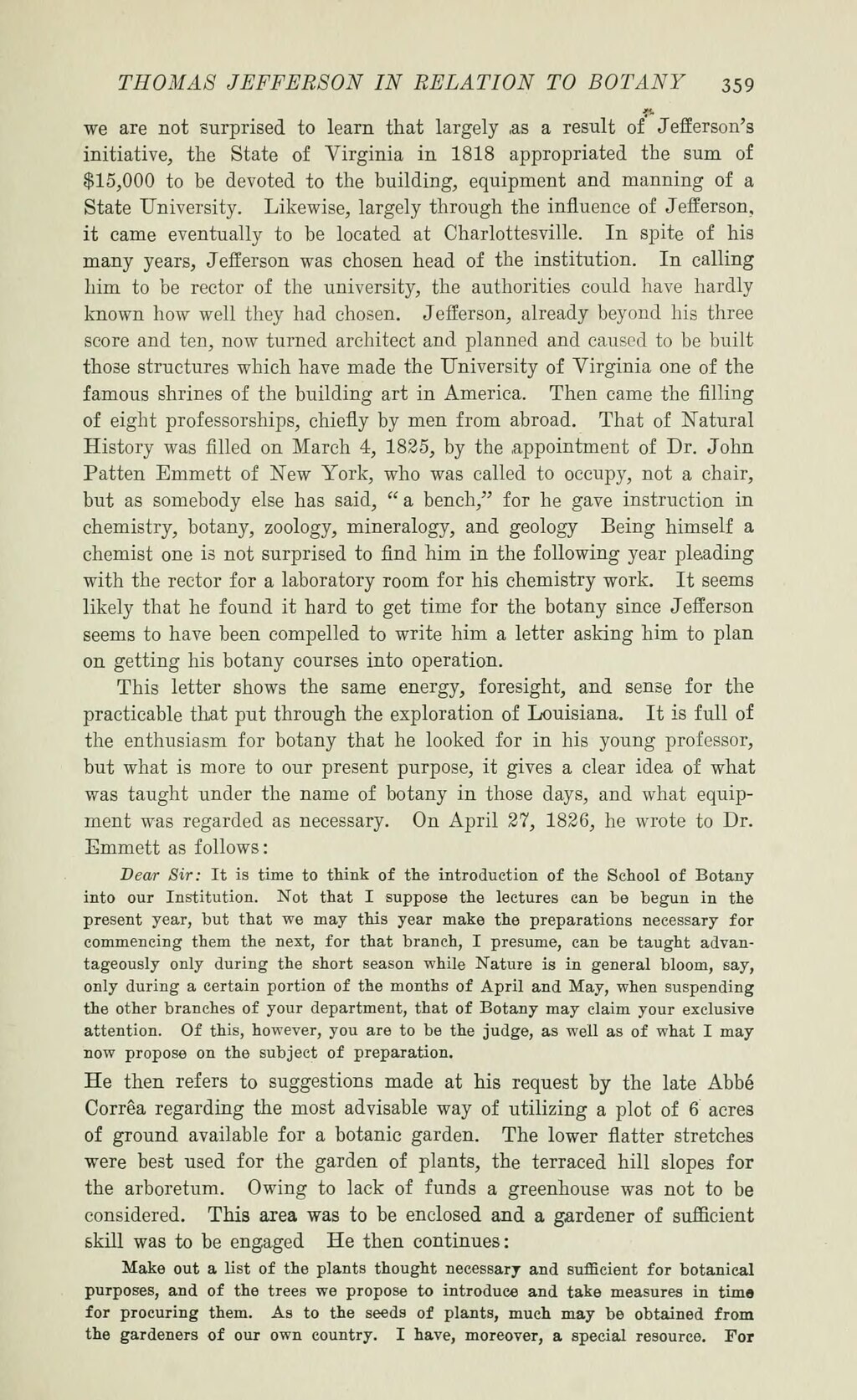THOMAS JEFFERSON IN RELATION TO BOTANY 359
we are not surprised to leaxn that largely as a result of Jefferson's initiative^ the State of Virginia in 1818 appropriated the sum of $15^000 to be devoted to the buildings equipment and manning of a State University. Likewise, largely through the influence of Jefferson, it came eventually to be located at Charlottesville. In spite of his many years, Jefferson was chosen head of the institution. In calling him to be rector of the university, the authorities could have hardly known how well they had chosen. Jefferson, already beyond his three score and ten, now turned architect and planned and caused to be built those structures which have made the University of Virginia one of the famous shrines of the building art in America. Then came the filling of eight professorships, chiefly by men from abroad. That of Natural History was filled on March 4, 1826, by the appointment of Dr. John Patten Emmett of New York, who was called to occupy, not a chair, but as somebody else has said, ^^a bench,'^ for he gave instruction in ehemistry, botany, zoology, mineralogy, and geology Being himself a chemist one is not surprised to find him in the following year pleading with the rector for a laboratory room for his chemistry work. It seems likely that he found it hard to get time for the botany since Jefferson seems to have been compelled to write him a letter asking him to plan on getting his botany courses into operation.
This letter shows the same energy, foresight, and sense for the practicable that put through the exploration of Louisiana. It is full of the enthusiasm for botany that he looked for in his young professor, but what is more to our present purpose, it gives a clear idea of what was taught imder the name of botany in those days, and what equip- ment was regarded as necessary. On April 27, 1826, he wrote to Dr. Emmett as follows :
Dear Sir: It is time to tldnk of the introduction of the School of Botany into oar Institution. Not that I suppose the lectures can be begun in the present year, but that we may this year make the preparations necessary for commencing them the next, for that branch, I presume, can be taught advan- tageously only during the short season while Nature is in general bloom, say, only during a certain portion of the months of April and May, when suspending the other branches of your department, that of Botany may claim your ezdusiye attention. Of this, howeyer, you are to be the judge, as weU as of what I may now propose on the subject of preparation.
He then refers to suggestions made at his request by the late Abb6
Gorr&a regarding the most advisable way of utilizing a plot of 6 acres
of ground available for a botanic garden. The lower flatter stretches
were best used for the garden of plants, the terraced hill slopes for
the arboretum. Owing to lack of funds a greenhouse was not to be
considered. This area was to be enclosed and a gardener of sufBicient
sldll was to be engaged He then continues:
Make out a list of the plants thought necessary and sufficient for botanical purposes, and of the trees we propose to introduce and take measures in time for procuring them. As to the seeds of plants, much may be obtained from the gardeners of our own country. I have, moreover, a special resource. For
�� �
